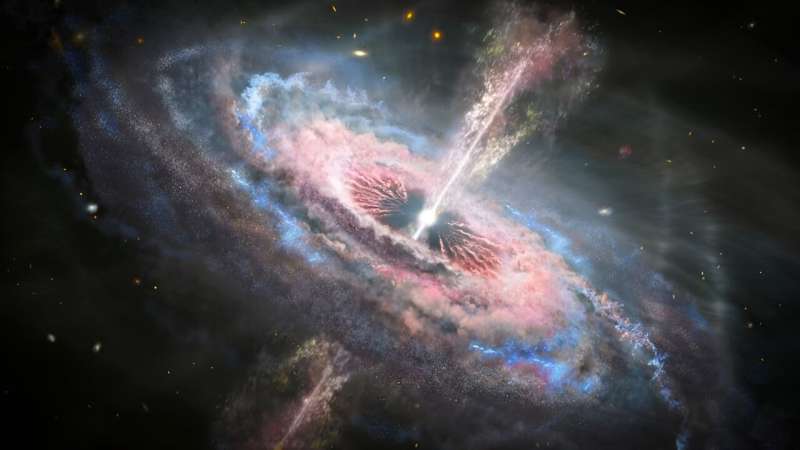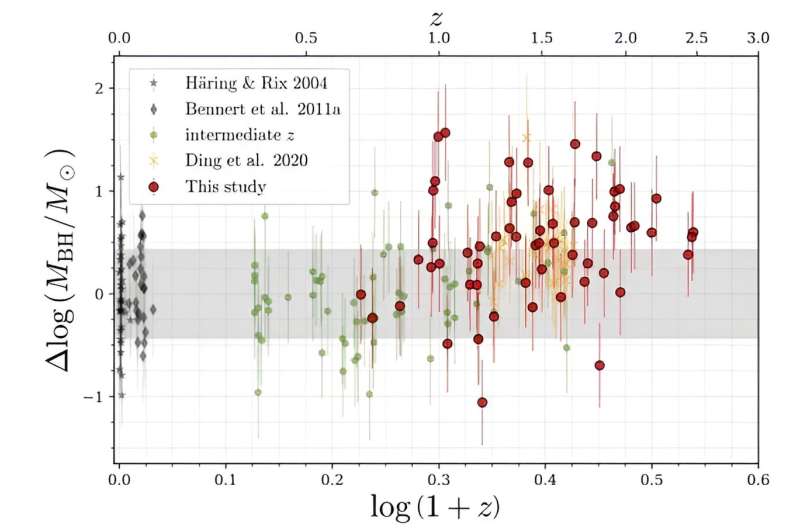This article has been reviewed according to Science X's editorial process and policies. Editors have highlighted the following attributes while ensuring the content's credibility:
fact-checked
trusted source
proofread
Even early galaxies grew hand-in-hand with their supermassive black holes

Within almost every galaxy there is a supermassive black hole. This by itself implies some kind of formative connection between the two. We have also observed how gas and dust within a galaxy can drive the growth of galactic black holes, and how the dynamics of black holes can both drive star formation or hinder it depending on how active a black hole is.
But one area where astronomers still have little information is how galaxies and their black holes interacted in the early universe. Did black holes drive the formation of galaxies, or did early galaxies fuel the growth of black holes? A recent study suggests the two evolved hand in hand.
It's difficult to observe the complex dynamics of black holes and galaxies in the early cosmos, but one way to study them is to compare the mass of a galactic black hole with the mass of all the stars in its galaxy. This can be expressed as a ratio MBH / M* to see how it varies over time. This means measuring this ratio at ever-increasing redshifts, since the greater the redshift, the younger the galaxy.
For this study, posted to the arXiv preprint server, the team looked at 61 galaxies with active galactic nuclei (AGNs) as identified by X-ray observations. The luminosity of the AGNs gives us an idea of the black hole's mass. They then added JWST observations of these galaxies from the COSMOS-Web and PRIMER surveys. From these, they could get the infrared luminosity of the galaxies, which let them determine their total stellar mass.

The galaxies they observed have redshifts between z = 0.7 and z = 2.5, meaning that the galaxies are seen as they were 6 billion to 11 billion years ago. What they found is that galaxies and their black holes grow hand in hand. As the galaxy increases in mass, so does the black hole. The relationship is very roughly linear, though the ratio favors the black hole slightly at higher redshifts. For you math geeks, the team found the ratio varies as MBH / M* = (1 + z)0.37. This means the black holes grow at a slightly slower rate than the galaxies.
Unfortunately, the uncertainty of this result is rather large. It will take more observations, particularly at the higher redshift end, to pin down the relation more precisely. But in the coming years, astronomers should be able to gather this data. This study shows that galaxies and their black holes grow at similar rates across billions of years. Future studies will help us understand the more subtle connections between them.
More information: Takumi S. Tanaka et al, The MBH-M* relation up to z~2 through decomposition of COSMOS-Web NIRCam images, arXiv (2024). DOI: 10.48550/arxiv.2401.13742
Provided by Universe Today




















